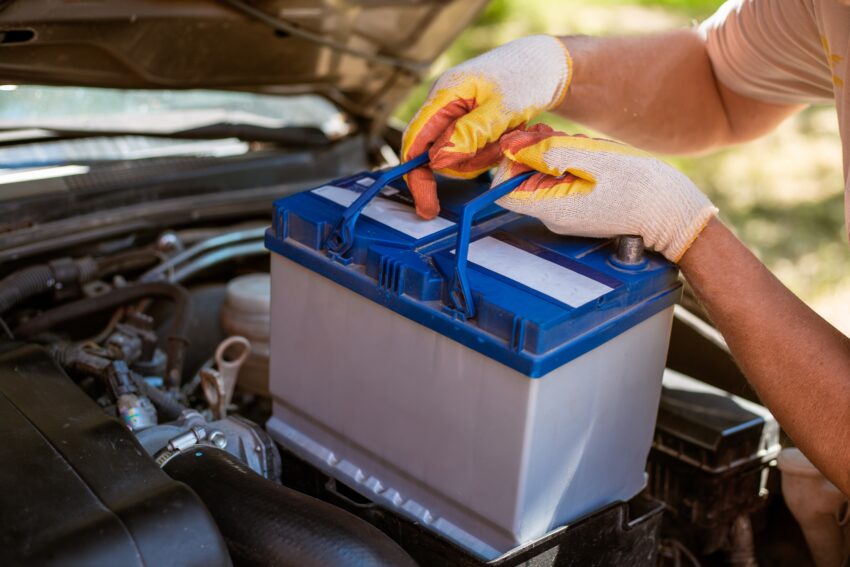One crucial factor that directly impacts an automobile’s dependability and performance is the battery. In the past, determining the condition of a battery required laborious procedures involving load testing and hydrometer data.
Despite their value at the time, these methods’ subjective nature frequently led to inconsistent results.
With the incorporation of cutting-edge technologies, the automotive industry is currently undergoing a revolutionary transition. Battery inspection has been transformed, particularly using non-destructive testing (NDT) procedures.
Compared to conventional methods, NDT inspection offers a more accurate, efficient, and secure assessment of battery health by utilizing advanced tools and techniques. This technological advancement has dramatically increased the accuracy of battery assessments, ultimately benefiting car owners and the automotive sector as a whole.
The Evolution of Battery Testing
Battery testing has evolved significantly since the inception of the automobile. Early methods involved basic visual inspections and rudimentary load tests, which were largely qualitative and offered limited insights into battery conditions.
The introduction of hydrometers, which measure specific gravity to indicate battery electrolyte concentration, marked an improvement. However, this method was time-consuming, prone to human error, and provided only a snapshot of battery health. These limitations necessitated the development of more sophisticated testing methodologies.
Modern Car Battery Testing Technologies
Technological advancements have significantly transformed the field of battery testing, making the process more accurate, efficient, and safe through the use of artificial intelligence, battery analyzers, and advanced diagnostic tools.
Diagnostic Tools
Originally designed for emissions diagnostics, OBD-II scanners now also feature battery health assessment capabilities. These devices access data from the car’s computer to provide information on the efficiency of the charging system, battery voltage, and other pertinent factors. While OBD-II scanners offer a preliminary assessment, advanced diagnostic software provides a more comprehensive analysis. These software programs can scrutinize battery data in greater detail, identifying minute irregularities and predicting potential future issues.
Battery Analyzers
Specialized devices known as battery analyzers are designed to evaluate a battery’s condition with high precision. These devices measure the battery’s capacity, state of charge, and overall health by applying controlled loads or measuring internal resistance. Capacity testers evaluate the battery’s ability to store and deliver energy, while load testers subject the battery to a specified load to assess its performance under stress.
Artificial Intelligence and Machine Learning
The integration of artificial intelligence and machine learning has added a new dimension to battery testing. Predictive maintenance models utilize both historical and real-time data to anticipate battery issues and facilitate proactive maintenance. Additionally, machine learning algorithms can detect patterns in battery data, enabling early detection of degradation and optimization of energy usage.
Prioritizing Safety in Battery Testing
Testing batteries involves handling potentially hazardous chemicals, making it essential to adhere to strict safety procedures. Proper ventilation is necessary to minimize the risk of exposure to harmful vapors.
Additionally, correct handling techniques, including the use of safety gear, are crucial to preventing accidents. Technological advancements in battery testing equipment have significantly enhanced safety.
For instance, the development of non-flammable testing facilities reduces fire risks, while automated handling systems eliminate the potential for human error. Various case studies highlight the effectiveness of these safety measures, demonstrating how technology has prevented accidents and protected individuals.
The Larger Impact of Technology on the Automotive Industry
The car industry will be profoundly impacted by the use of cutting-edge battery testing technology. Enhanced battery health management directly translates to higher customer satisfaction. Vehicle owners can maximize battery lifespan and prevent unexpected breakdowns by accurately monitoring battery conditions and predicting potential faults. This leads to greater vehicle reliability and peace of mind for customers.
Modern battery testing techniques also offer improved accuracy and efficiency, reducing costs for both auto repair businesses and vehicle owners. Early detection of battery issues allows for timely intervention, avoiding more complex and expensive repairs. Moreover, the ability to precisely assess battery health decreases the likelihood of unnecessary battery replacements.
From an environmental standpoint, longer-lasting batteries provide significant benefits. Fewer battery replacements lead to reduced waste and a decreased demand for raw materials used in battery production. Additionally, effective battery management enhances overall vehicle fuel efficiency, thereby reducing greenhouse gas emissions.
Conclusion
The automobile industry has been revolutionized by the integration of technology in battery testing. These advancements have improved environmental sustainability, reduced costs, and increased customer satisfaction by providing fast, safe, and accurate methods to evaluate battery health.
As technology continues to evolve, the future of battery testing looks promising. The combination of advanced diagnostic tools and artificial intelligence is expected to yield more precise and predictive battery health assessments. Automotive professionals aiming to optimize vehicle performance, extend battery life, and prioritize safety must embrace these modern testing techniques.


